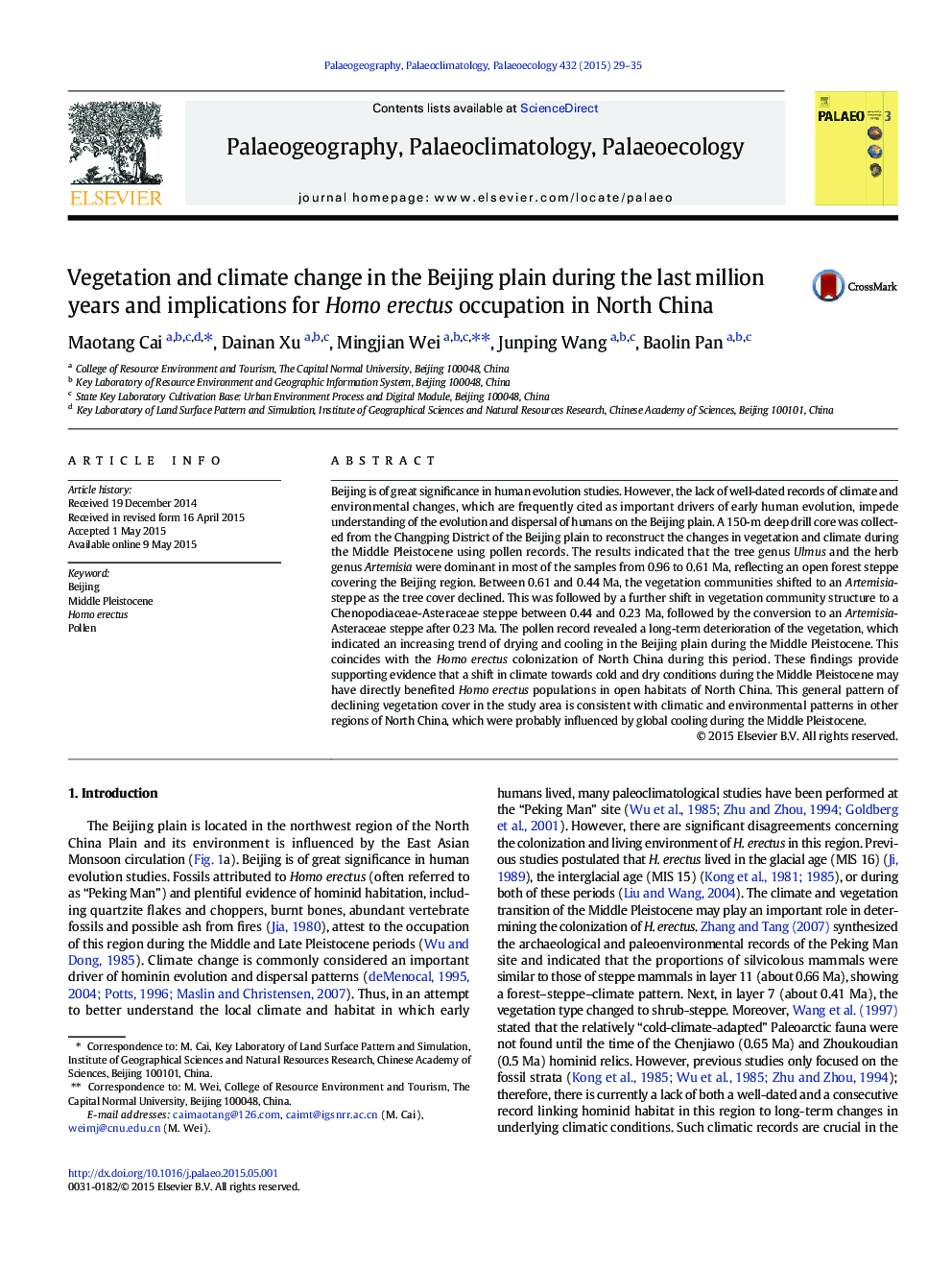| کد مقاله | کد نشریه | سال انتشار | مقاله انگلیسی | نسخه تمام متن |
|---|---|---|---|---|
| 4465884 | 1622158 | 2015 | 7 صفحه PDF | دانلود رایگان |

• A 150 m deep drill core was collected from Beijing plain.
• The pollen record revealed the vegetation and climate change during the last million years.
• The shift in climate towards cold and dry conditions may have directly benefited Homo erectus populations in open habitats of North China.
Beijing is of great significance in human evolution studies. However, the lack of well-dated records of climate and environmental changes, which are frequently cited as important drivers of early human evolution, impede understanding of the evolution and dispersal of humans on the Beijing plain. A 150-m deep drill core was collected from the Changping District of the Beijing plain to reconstruct the changes in vegetation and climate during the Middle Pleistocene using pollen records. The results indicated that the tree genus Ulmus and the herb genus Artemisia were dominant in most of the samples from 0.96 to 0.61 Ma, reflecting an open forest steppe covering the Beijing region. Between 0.61 and 0.44 Ma, the vegetation communities shifted to an Artemisia-steppe as the tree cover declined. This was followed by a further shift in vegetation community structure to a Chenopodiaceae-Asteraceae steppe between 0.44 and 0.23 Ma, followed by the conversion to an Artemisia-Asteraceae steppe after 0.23 Ma. The pollen record revealed a long-term deterioration of the vegetation, which indicated an increasing trend of drying and cooling in the Beijing plain during the Middle Pleistocene. This coincides with the Homo erectus colonization of North China during this period. These findings provide supporting evidence that a shift in climate towards cold and dry conditions during the Middle Pleistocene may have directly benefited Homo erectus populations in open habitats of North China. This general pattern of declining vegetation cover in the study area is consistent with climatic and environmental patterns in other regions of North China, which were probably influenced by global cooling during the Middle Pleistocene.
Journal: Palaeogeography, Palaeoclimatology, Palaeoecology - Volume 432, 15 August 2015, Pages 29–35